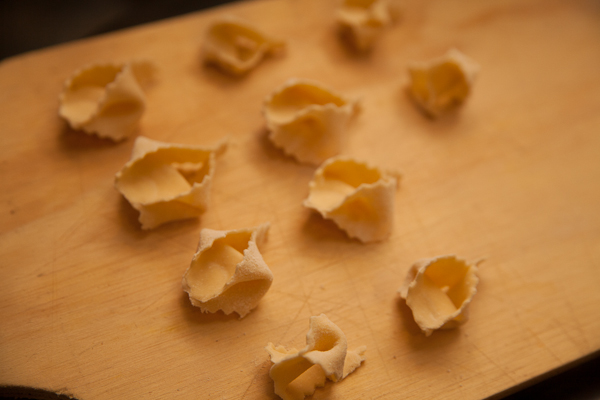I recently heard about, and immediately had to get a copy of Artusi Pellegrino’s Science in the kitchen and the art of eating well. This amazing book is a huge collection of recipes from all around Italy, as they were cooked in the late 1800s. More than just a recipe book though, it includes anecdotes about popular culture and people in society at that time as well as some context for some of the recipes – the region where it is prepared or even the family who supplied the recipe. I can’t recommend the book enough for anyone with an interest in traditional Italian food, it’s very interesting comparing recipes as we know them now with the versions made 140 years ago. While a lot of things are similar, and arguably modern recipes are more refined in some respects, there are some interesting things here that I am eager to try out.
A few examples that caught my attention – I noted that one of Artusi’s recipes for gnocchi includes chicken breast, mined fine as well as potato. His anolini use a heavily reduced meat broth with beef cooked in broth and simmered for 8-9 hours until a few tablespoons of stock are left – this is used in the filling. The ingredients for Maccheroni Alla Bolognese (Macaroni Bolognese Style) are very similar to how I make it even including bacon, but tomato is not used – although Artusi adds a little tomato paste at a whim to many recipes, the cooking style he advocates is much more fluid than the ingredient lists given in modern cookbooks. The pasta used in this recipe is referred to as denti di cavallo – ‘horses teeth’ sized pasta which are in the form of short tubes, like rigatoni.
I’m a long time fan of Ribolita soup and have always seen recipes that include stale bread in the recipe. Reading the soup recipes in Science in the Kitchen I understand this much better as nearly every soup and many other dishes use cubed bread for thickening or to give body or extra substance. Generally the bread is sliced thin, toasted, then cubed and the soup poured over, although some soups boil the bread along with other ingredients.
There are far too many recipes to detail here but I plan to cook, or at least adapt many of them in the near future. One new pasta shape that I have tried already based on the description in the book is the ‘strichetti’ pictured below, where diagonally opposite corners of a square of pasta are folded together above and below, creating a robust shape that holds sauce very well. This seems to be a variation of the modern, bow-tie shaped version also called farfalle. I’ll write up the recipe soon.

Science in the kitchen and the art of eating well is available here on Amazon in both hard copy and Kindle versions, including an interesting, quite long introduction with a lot of the back story and history of the book. Although I think the text would be well out of copyright, I haven’t been able to find it on Project Gutenberg etc – please leave a comment if you know where to find a free version. As a footnote – if you’re an offal lover you’ll have a field day here, with recipes and instructions for preparing parts of the animal I didn’t even know people ate. Veal udder anyone? Or maybe you’d prefer some frog risotto?
